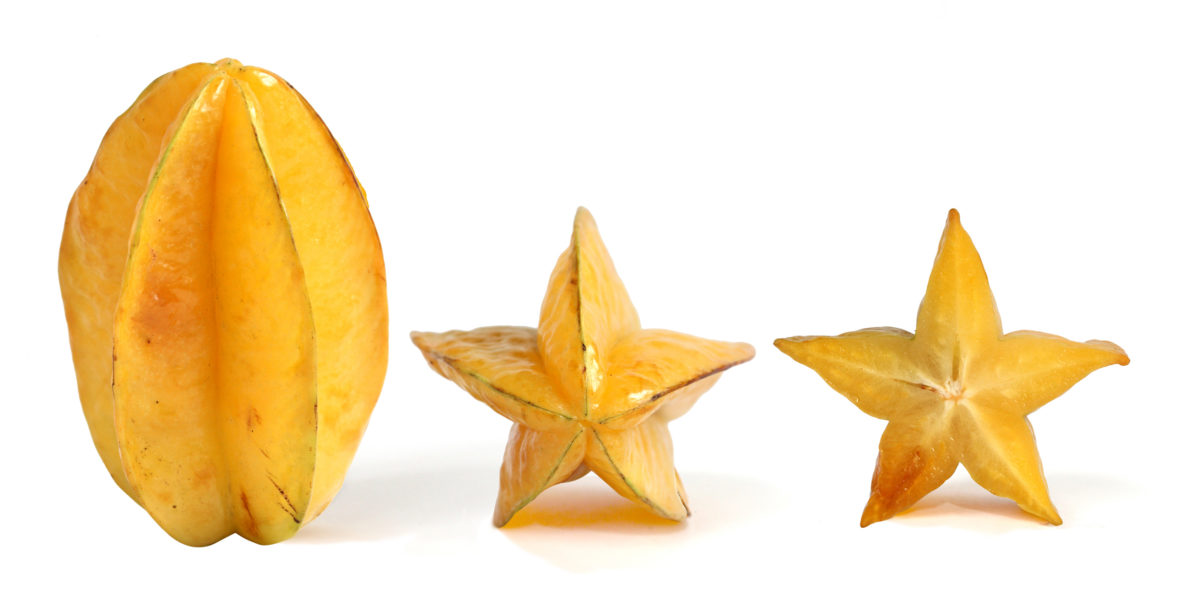Starfruit, also known as carambola, is the fruit of Averrhoa carambola, a species of tree native to Indonesia, Philippines, Malaysia, Vietnam, Nepal, India, Bangladesh, Sri Lanka, Mauritius and Seychelles. Take a look below for 25 more fun and interesting facts about star fruit.
1. Starfruit is popular throughout Southeast Asia, the South Pacific, Micronesia, and parts of East Asia.
2. Starfruit trees are cultivated throughout non-indigenous tropical areas.
3. The fruit has distinctive ridges running down its sides, usually five but can sometimes vary. When it’s cut in cross-section, it resembles a star, which is where the name comes from.
4. The entire fruit is edible and is usually eaten out of hand, but it can also be used in cooking.
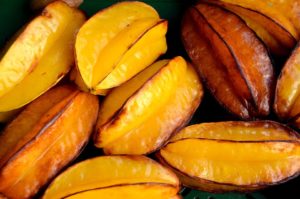
5. It’s believed that starfruit may have originated from Sri Lanka or Moluccas, Indonesia, but has been cultivated in the Indian Subcontinent and Southeast Asia for hundreds of years.
6. Starfruit are cultivated commercially in India, Southeast Asia, southern China, Taiwan and Florida.
7. The Portuguese word “carambola,” was first used in 1598, and was taken from Marathi “karambal”, which was derived from Sanskrit “karmaphala.”
8. Starfruit grows in hot, frost-free areas, on fertile, slightly acidic loamy soil, exposed to direct sunlight.
9. Starfruit has a short trunk and a bushy, roundish crown. It can reach 25 to 30 feet in height and 20 to 25 feet in width.
10. Starfruit has compound leaves composed of 5 to 11 nearly opposite pairs of ovate to oblong leaflets. The leaves are green colored and covered with whitish hairs on the bottom side.
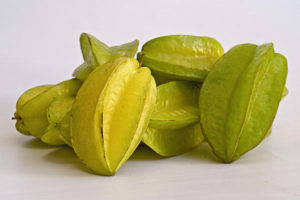
11. The fruit folds its leaves during the night and as a response to the vibration of the tree.
12. Starfruit produces small, bell-shaped flowers that are arranged in clusters and that grow from the axils of leaves. The flowers are lilac colored and contain both types of reproductive organs.
13. Starfruit blooms all year round and attracts bees, which are largely responsible for the pollination of the plant.
14. Starfruit is light green or yellow colored and covered with smooth, waxy skin on the surface. It has a crispy, juicy pulp and 10 to 12 light brown edible seeds.
15. Starfruit starts to produce fruit 3 to 4 years after planting. Mature trees can produce 200 to 400 pounds of fruit per year.
16. The fruit is a rich source of dietary fibers, vitamin C, vitamin B2, vitamin B6, vitamin B9 and minerals such as phosphorus, potassium, zinc and iron.
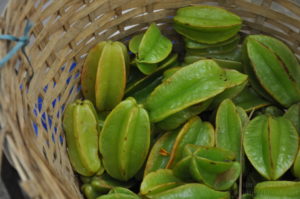
17. The entire starfruit is edible. It has a texture like grapes and a taste that resembles a blend of pineapple, plum and lemon.
18. There are two varieties of starfruit, sweet and tart. The tart variety is used as garnish and for the preparation of stews, curries, dishes made of poultry, fish and seafood. The sweet variety is eaten fresh or it can be used for the preparation of juices, cocktails, jams and sweet desserts.
19. Starfruit can get rid of excess water from the body. They’re also used in the treatment of cough, jaundice, constipation and bacterial infections.
20. Starfruit leaves and root are sometimes used in traditional medicine in the treatment of chickenpox, headache and ringworm.
21. People diagnosed with renal disorders should avoid starfruit because it contains oxalic acid, which facilitates the formation of kidney stones.
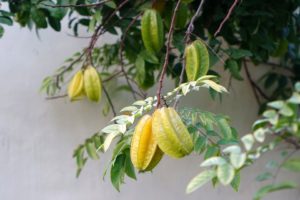
22. Starfruit inhibits the activity of CYP3A4 enzyme, which is responsible for the metabolism of 50% of all medicine. This is why starfruit should be avoided if you’re taking any kind of medicine.
23. Starfruit is a perennial plant and can survive in the wild for about 40 years.
24. In South Asian countries, there’s a belief that eating starfruit enhances the libido of males.
25. In the Philippines, unripe starfruit is eaten dipped in rock salt.

